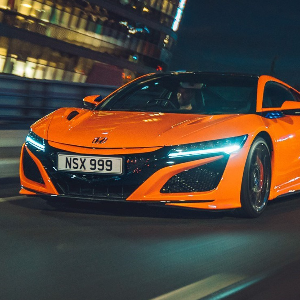
After the brilliant VW Golf GTI Mk2, the Mk3 came across a little drab in 1991. But what about 20 years and some rose-tinted specs later? We've driven one on UK roads to find out.
The poor old third-generation Volkswagen Golf. When it was launched in 1991, it fell a little flat following in the wake of the more exciting Mk2.
There were genuinely interesting things about the Mk3 though. It had more eco-conscious water-based paint (which, er, meant it rusted quite badly), more of it could be recycled than other hatchbacks at the time and there was this quirky Ecomatic model with an electronically controlled clutch and an early form of start-stop tech. All of which is very relevant today.
And surely the sporty GTI Mk3 can't have been that bad, right? Sure, it had a fairly mediocre 115hp to begin with, but a year later it was upgraded to a 150hp 2.0-litre 16-valve petrol engine and was treated to a sportier suspension set-up at the same time. Now, where did we put those rosy specs?
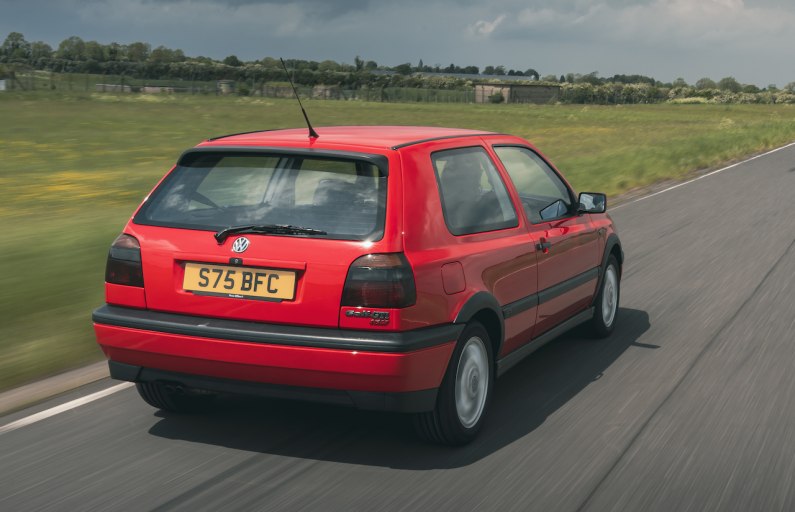
Design
Sure, at the time, the Golf Mk3 was seen as being a safe design, but against the context of today's cartoonish hot hatches, it looks pleasingly clean. Not beautiful, but purposeful without drama.
After the boxier Mk1 and Mk2 Golfs, the Mk3 looks a little bulbous, but it was always going to be that way with advancements in production techniques and the need for better aerodynamics and in turn fuel economy.
The Mk3 GTI stands out from the rest of the Golf range with a sportier body-coloured body kit, darkened rear lights, a small roof spoiler and side and rear GTI badging. There are also unique 15-inch alloy wheels.
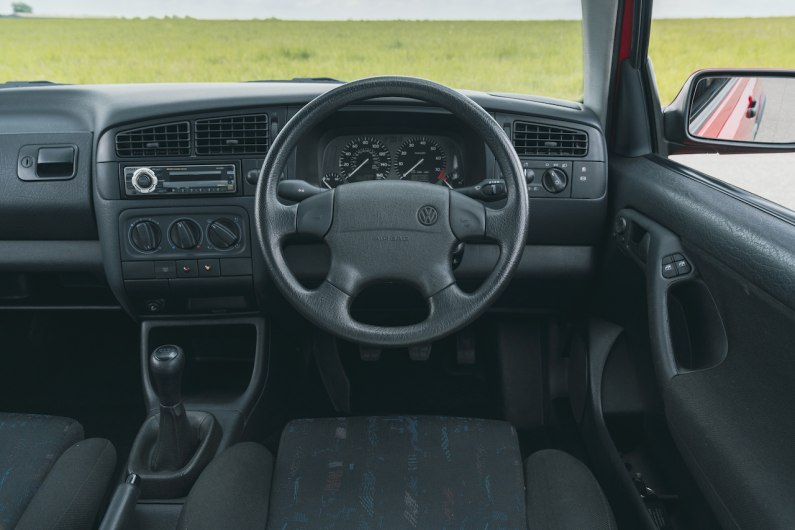
Interior
The GTI Mk3's exterior was fairly easy to defend, but we're struggling to get excited about the insides. It's pure 1990s in there, with shiny soft plastics mixed with shiny hard ones, all in black.
There aren't too many switches, mind, and it's an extremely simple dashboard to operate – unlike the multi-touchscreen jobs you get these days. The steering wheel is a nice size and thickness and aside from having buttons for the horn, is otherwise only used for steering. Imagine that.
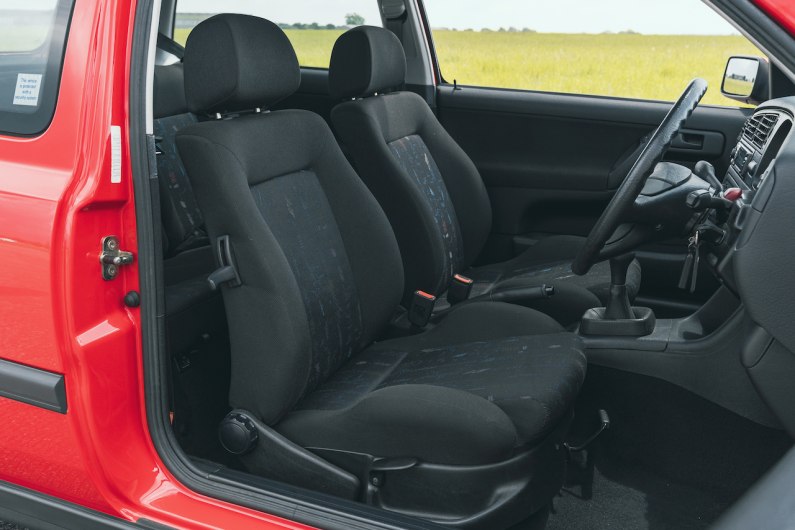
This 1997 model we're driving has a set of Recaro sports seats in a cloth pattern that looks like they're straight from the set of Saved By The Bell. They might look cool, but we found them a touch small with not enough bolster support. Or maybe we've put on a bit of timber in lockdown.
Infotainment system? Er, a Sony single-Din radio with CD player and monochrome display in this case. No Apple CarPlay here.
The positive part of modern cars growing in size is that the latest Golf will seat four tall adults without issue. Not so, here, where they'll find their head against the ceiling and knees against the front seatbacks sat in the back. The Mk3s boot is visibly smaller too, although still has decent access and a useful shape.
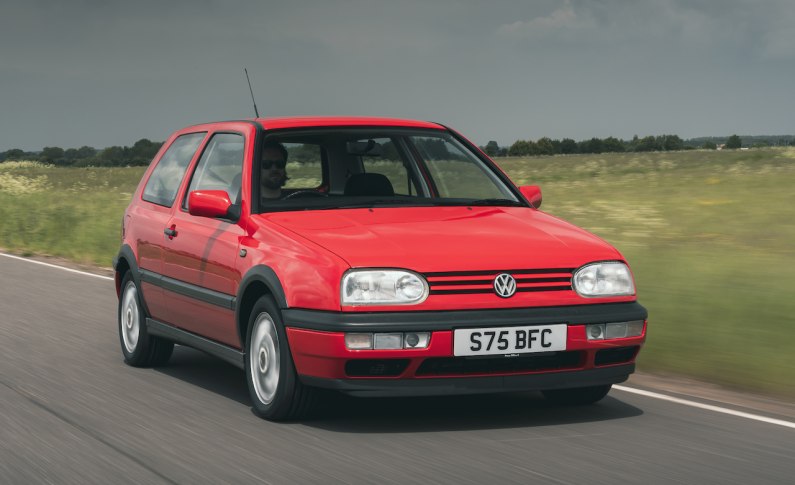
On the road
Like its looks, back in the day, the Mk3 GTI's drive felt a little refined next to the slower but lighter and more visceral GTI Mk2. Today though, the Mk3 is a black and white TV in a Curry's full of AI googles.
As such, it's much more fun and interesting to thrash along a country road in 2021 than 1991, purely because the latest GTIs are so fast, so refined and so grippy, you don't have to work half as hard to carry the sort of speeds you are realistically able to on the public road.
With no turbo, there's precious little torque to rely on, but that 150hp 16v 2.0-litre petrol loves to rev and even sounds pretty good doing it too. It's a shame that the five-speed manual gearbox feels a bit rubbery, though, and the Mk3's steering doesn't have the sort of precision you want from a hot hatch either.
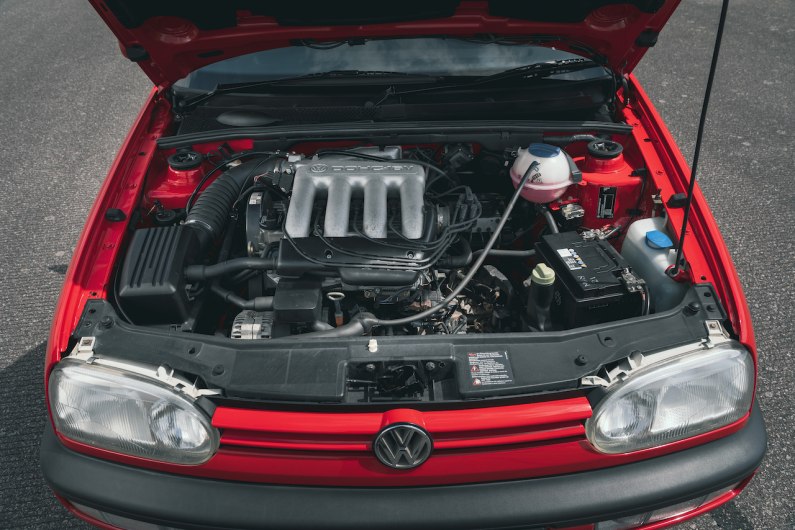
And, with an extra 100kg-or-so of weight to carry along, the Mk3 Golf GTI is actually no quicker to 62mph from a standstill than the previous Mk2. It does roll less in tight bends, though, meaning more speed can be carried through them.
That said, despite the sporty chassis upgrades in 1992, the Mk3 GTI is still a very soft car by modern standards. That's actually one of its best features – too many modern hot hatches feel harsh in the pursuit of lap times. The Mk3 flows across undulations and still has enough grip to ensure confidence.
All-told, the Mk3 GTI isn't the most enjoyable Golf GTI to drive, but it's far from the bland experience reported in the 90s. Like many older cars in today's world, there's joy to be had from actually driving the car down a country road, in having to consider and measure more factors than in the super-capable machines on sale now.
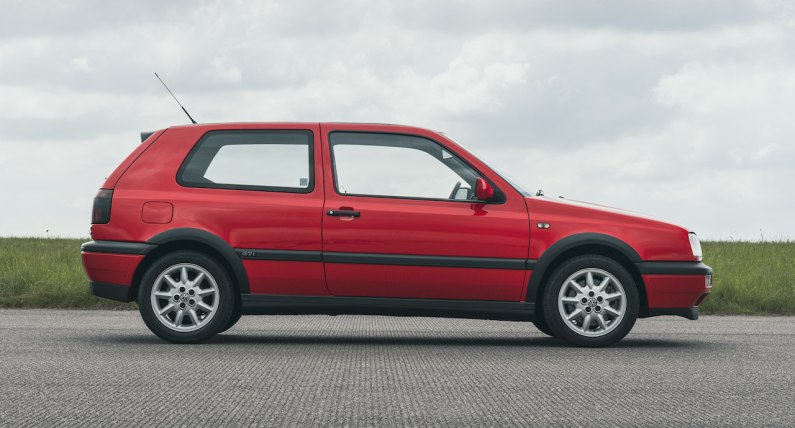
Verdict
So, the Golf GTI Mk3 isn't the sharpest GTI, nor the most exciting inside, but it is looking better on the outside as each year passes and is currently one of the cheapest ways into GTI ownership.
For that low price, you're getting better reliability than with the GTIs that went before it and surely the promise of values going up as we move towards an all-electric future.
Facts and figures
Model tested: 1991 Volkswagen Golf GTI
Price new in 1997: £16,575
Price today after inflation: £30,850
Engine: 2.0-litre four-cylinder petrol
Transmission: five-speed manual, front-wheel drive
Power/Torque: 150hp/180Nm
0-62mph: 8.3 seconds
Top speed: 134mph
